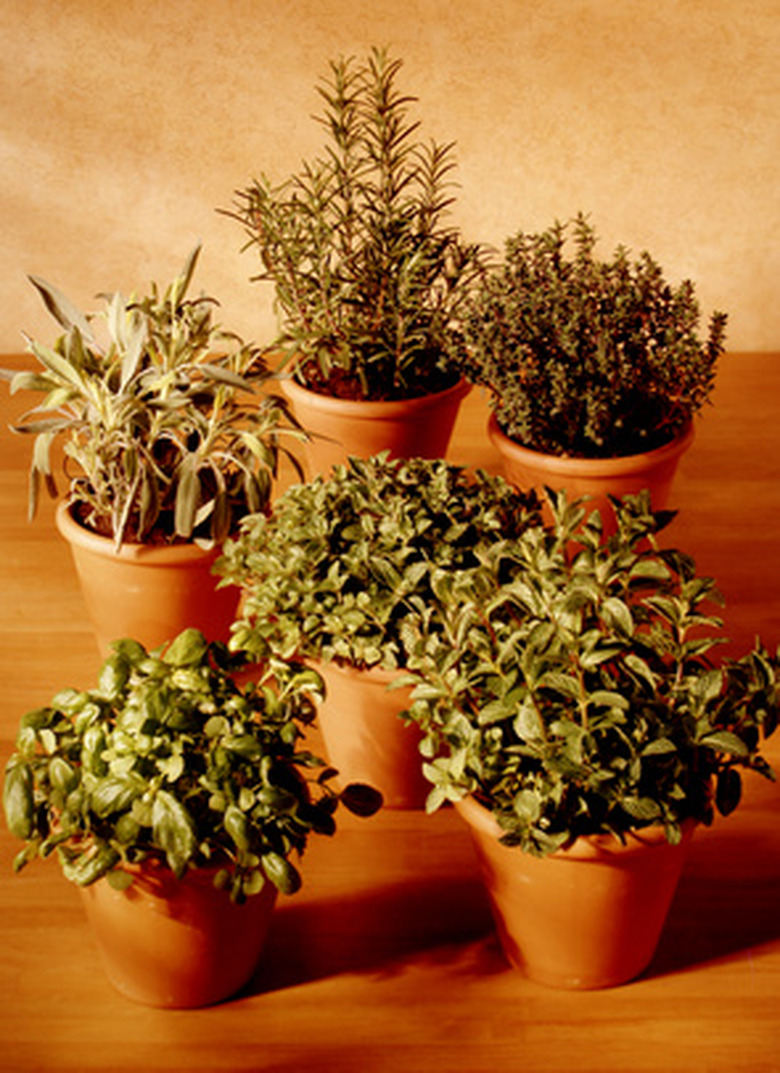How To Grow Mushroom Plant Herbs
Things Needed
- Mushroom plant herb cuttings or plant
- 6-inch pot
- Potting mix
- Snips
- Scissors
- Hormone rooting powder
- Sheet of paper or paper towel
- Trowel
- Starter fertilizer
The mushroom plant herb (Rungia klossii) is a low-growing, perennial herb indigenous to New Guinea. It is grown for its edible leaves that taste like a mushroom, thus its name. The leaves of the mushroom plant can be eaten raw or cooked, such as added to stir-fry dishes. Mushroom plant herbs are highly nutritious and contain calcium, beta carotene and vitamin C.
Growing Mushroom Plant Herbs from Cuttings
Step 1
Fill a 6-inch (or larger) pot with a good quality peat-based potting mix until the pot is about half full. Cut off two to three 6- to 7-inch sections from the mushroom plant.
Step 2
Strip off all the leaves from the bottom 3 to 3 1/2 inches from the mushroom plant cutting. Cut the remaining leaves in half using a pair of scissors.
- The mushroom plant herb (Rungia klossii) is a low-growing, perennial herb indigenous to New Guinea.
- Cut off two to three 6- to 7-inch sections from the mushroom plant.
Step 3
Pour out about 1 tablespoon of the hormone powder onto a sheet of paper or paper towel. Roll the stripped half of the cutting in the hormone rooting powder. Use your index finger to gently tap the cutting to shake off any excess powder.
Step 4
Poke two to three holes that are about 3 to 3 1/2 inches deep in the center of the soil in the 6-inch pot. Keep the holes about 1 1/2 inches apart from each other.
Step 5
Set a mushroom cutting into each of the holes in the soil. Make sure the cuttings will be buried about halfway and that no leaves will be submerged in the soil.
- Pour out about 1 tablespoon of the hormone powder onto a sheet of paper or paper towel.
- Poke two to three holes that are about 3 to 3 1/2 inches deep in the center of the soil in the 6-inch pot.
Step 6
Push in and around each of the mushroom plant cuttings using your thumb and index finger.
Step 7
Set the pot containing the mushroom plant cuttings in a warm, brightly lit area within your home. Try ro keep the temperature at, or above 60 degrees F. And provide eight to 10 hours of indirect light every day until the cuttings take root and are growing (in about two to three weeks, depending on conditions). Then set the container in a sun-filled, to partially shaded location outside and keep the pot moist but never water-logged.
Growing Mushroom Plant Herbs in the Ground
Step 1
Dig planting holes for the mushroom plant herbs that are as wide and as deep as the growing containers. Space each hole about 20 to 24 inches apart from one another. Plant the mushroom plant herbs in a sunny to partially shaded location.
- Push in and around each of the mushroom plant cuttings using your thumb and index finger.
- Set the pot containing the mushroom plant cuttings in a warm, brightly lit area within your home.
Step 2
Remove a mushroom plant herb from its growing container. Flip the container vertical. Gently tap downwards on the rim of the container to loosen the pot from the root system. Once the container loosens, slide if off the root system
Step 3
Plant a mushroom plant herb into a previously created planting hole. Make sure when it is sitting in the planting hole it's not planted too deeply. The top of its root system needs to be level to the soil that surrounds it.
- Remove a mushroom plant herb from its growing container.
- Once the container loosens, slide if off the root system Plant a mushroom plant herb into a previously created planting hole.
Step 4
Scoop in garden soil to fill the planting hole full. Gently firm the soil down around the mushroom plant herb.
Step 5
Mix into 1 gallon of water approximately 1 tablespoon of a starter fertilizer, such as 8-32-16. Water each of the mushroom plant herbs with approximately 1/2 gallon of water.
Tip
Mushroom plant herbs are fast growing, typically they are ready for harvesting between 60 and 120 days after planting, according to ecocrop.org.
